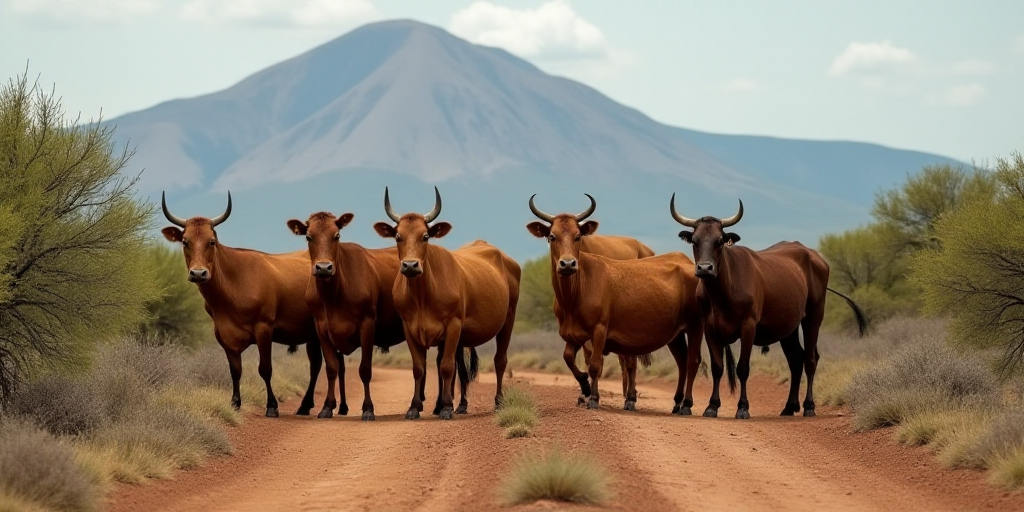Background on the Confederación Nacional de Organizaciones Ganaderas (CNOG)
The Confederación Nacional de Organizaciones Ganaderas (CNOG) is a prominent national organization representing Mexican cattle producers. Collaborating with various entities, CNOG aims to ensure the continuity of Mexican cattle exports to the United States by combating a significant threat: the cattle parasite known as the “barrenador.”
26 Strategic Actions to Combat the Parasite
CNOG, in partnership with other organizations, has devised and implemented a comprehensive plan consisting of 26 strategic actions divided into two primary zones to tackle and eradicate the cattle parasite problem.
Southern Zone Initiatives
- Continuous Training: Enhance knowledge and skills among cattle producers to better identify, manage, and prevent the parasite infestation.
- Case Monitoring: Regularly track and document parasite-related cases to assess the effectiveness of implemented strategies.
- Intelligence Department Creation: Establish a specialized department to investigate and combat illegal activities related to the parasite.
- Suspension of Production and Service Units: Temporarily halt certain units in Chiapas to allow the Senasica (Mexican animal and plant health inspection service) to take control.
- TIF Slaughterhouse Demands: Insist on the destruction of animal identification tags and restrict virtual movement of animals to prevent illegal distribution.
- Sanitary Barriers Implementation: Introduce measures to restrict the spread of the parasite through improved animal handling and transportation practices.
- Reduction of Illegal SINIIGA Tag Distribution: Work with relevant authorities to minimize the illegal distribution of SINIIGA tags, which are crucial for parasite control.
- Support in Bovine Treatment During Transit: Collaborate with veterinarians and other professionals to ensure proper treatment of cattle during transportation.
- Cooperation in Inspection and Treatment Points: Strengthen partnerships with inspection and treatment points to ensure consistent parasite control measures.
- Insistence on Treatment Certifications: Require proof of parasite treatment for all cattle before export.
Northern Zone Initiatives
- Constant Communication with Exporters: Maintain open lines of communication with exporters to ensure alignment on parasite control strategies.
- SENASICA-APHIS Relationship: Foster a strong working relationship between Mexico’s animal and plant health inspection service (SENASICA) and the U.S. Animal and Plant Health Inspection Service (APHIS).
- New Export Protocol Development: Collaborate on creating and implementing a new export protocol that prioritizes parasite-free cattle.
- Infrastructure for Dual Inspection: Develop and maintain infrastructure to support dual inspection processes, ensuring thorough parasite screening.
- Exportation Turn Management: Coordinate and manage export turn schedules to optimize parasite control efforts.
- Guarantee Healthy Cattle from Origin: Ensure cattle are parasite-free from the point of origin through rigorous inspection.
- Intervention in Fly Sterilization Company Crisis: Address challenges faced by the company responsible for sterile fly dispersal to maintain parasite control.
- Follow-up on Fly Sterilization Dispersal: Monitor the effectiveness of sterile fly dispersal programs in controlling parasite populations.
Key Questions and Answers
- What is the CNOG? The Confederación Nacional de Organizaciones Ganaderas (CNOG) is a national organization representing Mexican cattle producers, working to ensure the continuity of Mexican cattle exports to the United States.
- What is the main challenge CNOG is addressing? CNOG is tackling the issue of the cattle parasite known as the “barrenador,” which threatens Mexican cattle exports to the U.S.
- How many strategic actions have been implemented? CNOG and its partners have implemented a total of 26 strategic actions to combat the parasite problem.
- What are some key initiatives in the southern zone? Key initiatives include continuous training, case monitoring, creating an intelligence department, and suspending production and service units in Chiapas.
- What are some key initiatives in the northern zone? Key initiatives include constant communication with exporters, fostering a strong SENASICA-APHIS relationship, and developing a new export protocol.






